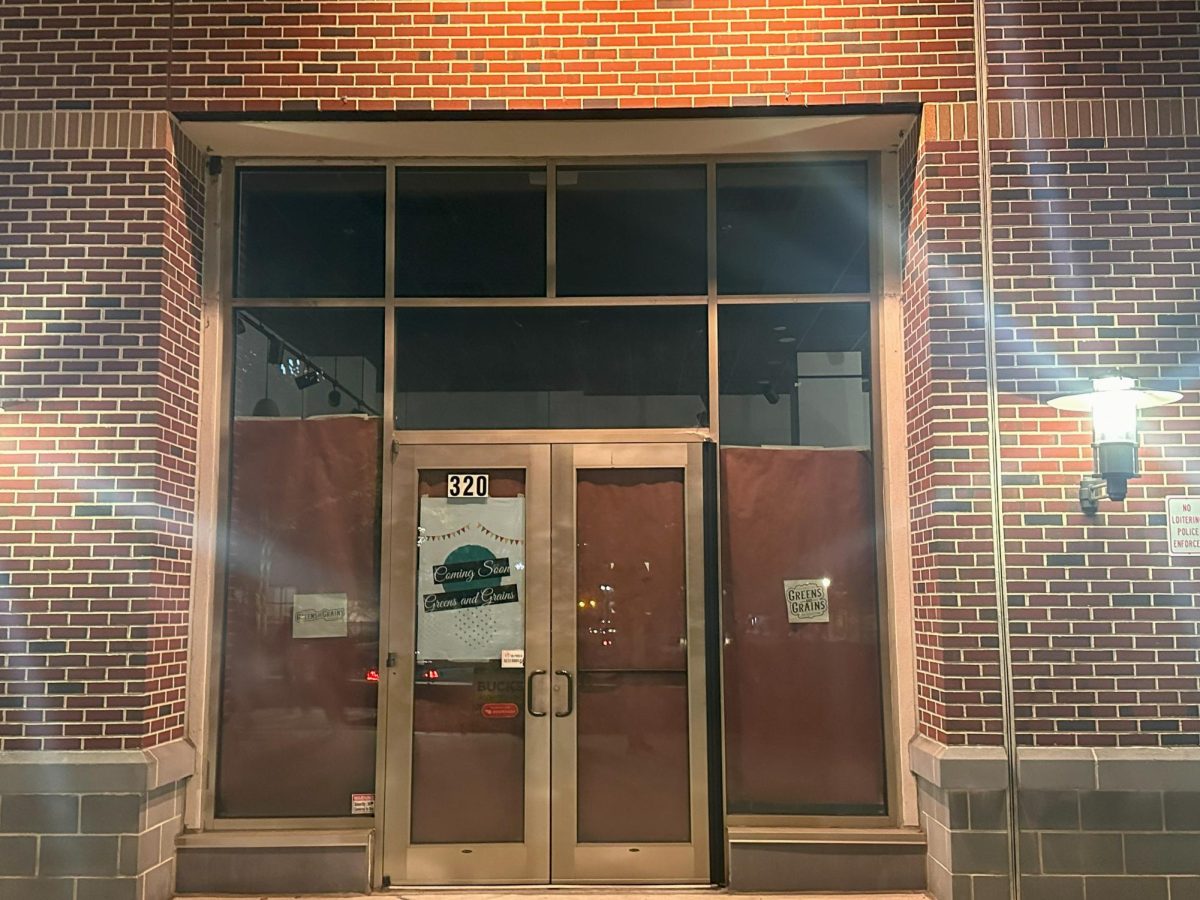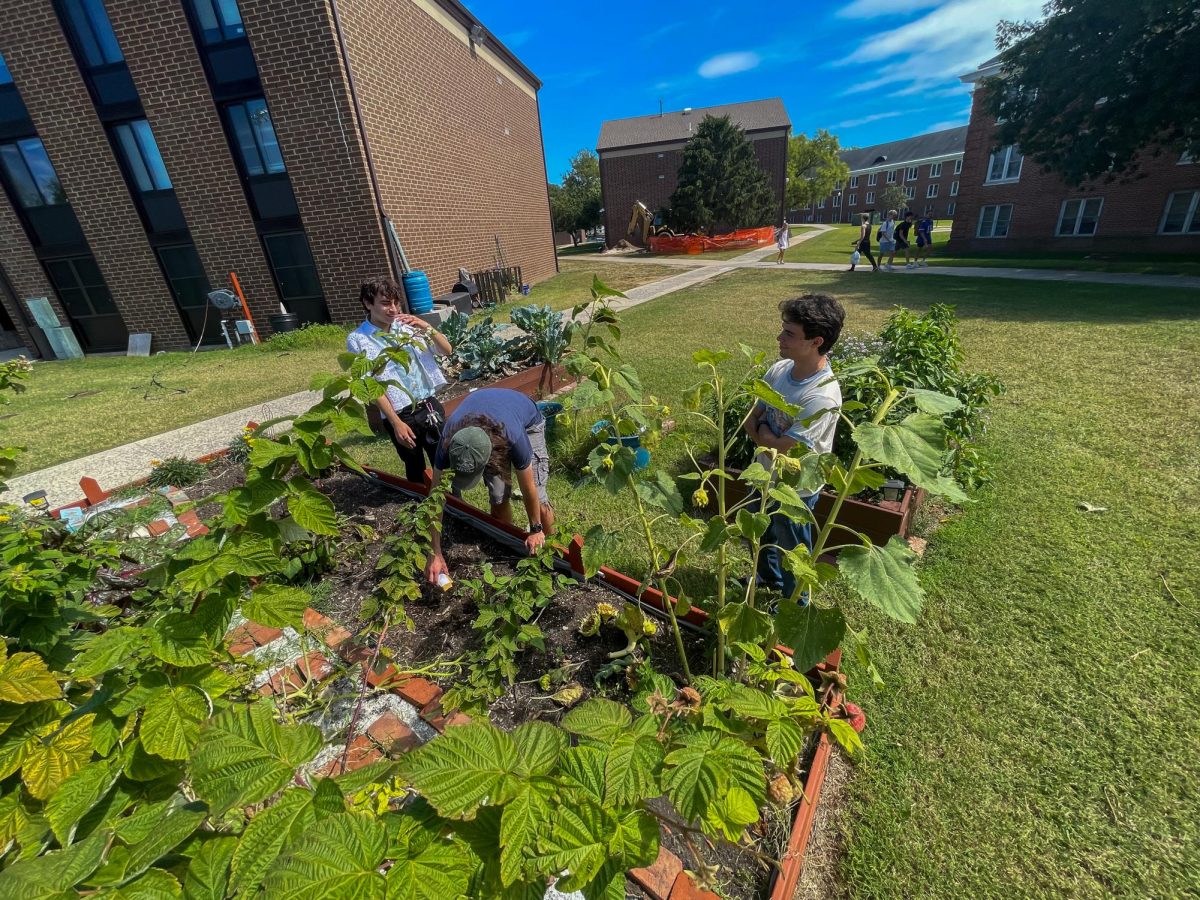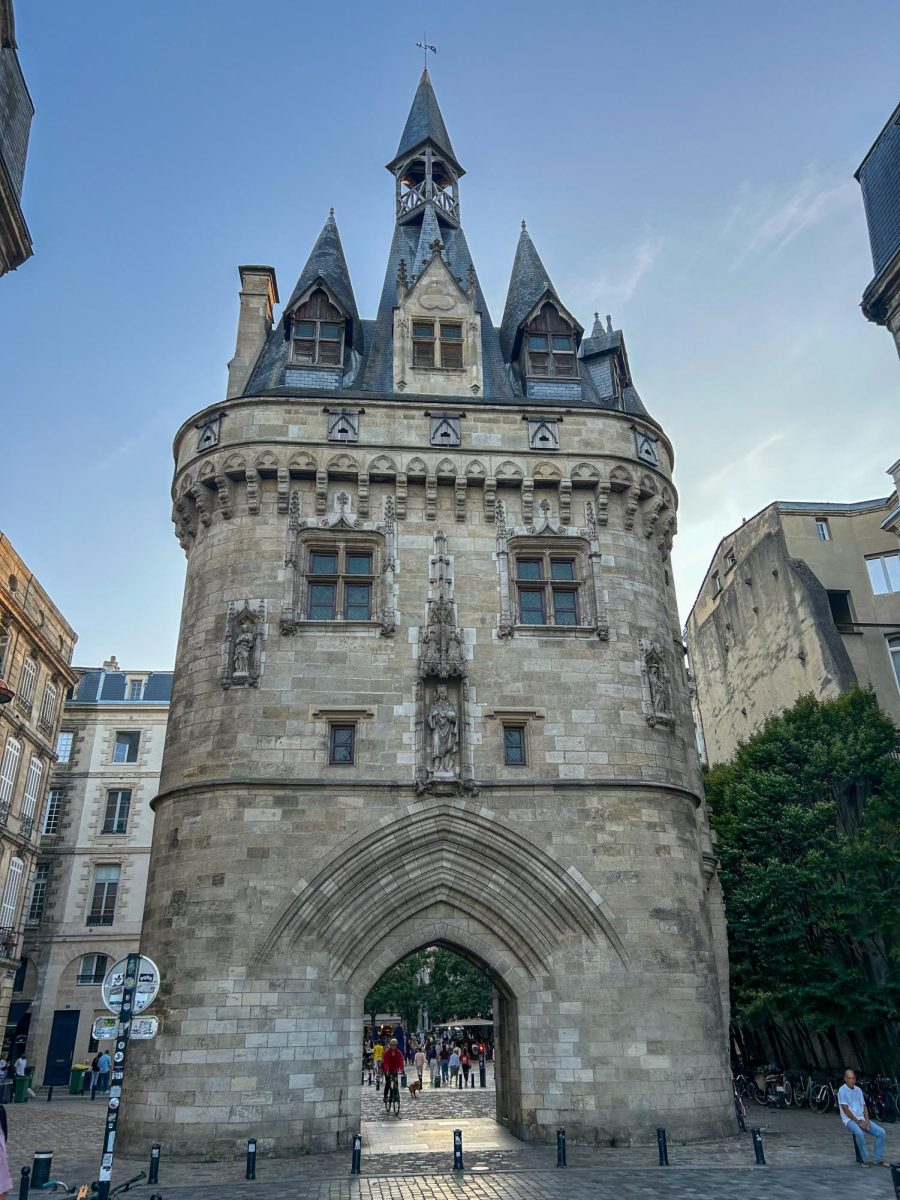As mid-day sunlight pours through the open windows of a turn-of-the-century library on the rim of a small town, a community is given the chance to remember its beginnings.
However, inside the building’s creaky walls, the history of the settlement that built it is only partly stored in the yellowing pages of history books. The rest is projected around the room when the daylight rays shift across through the stained glass chinaware lining the interior of the library. Every glass figure, from the brown whiskey bottles to the milk glass vases, were all once part of the economic foundation of the area.

Even the library building itself is a remnant of the past. Today, it is know in the town as the Glassboro Heritage Glass Museum and is owned by 88-year-old Glassboro native, Marilyn Campbell Plasket. In her eyes, the striking vibrancy and craftsmanship of each glass piece illustrates what once made the town of Glassboro keenly unique compared to the rest of New Jersey.
“Glassboro is the only town in the country to have the word ‘glass’ in its name,” Plasket said with an earnest grin.
While Plasket was not alive to see the glass production days of her hometown, she claims she is still enamored by the past and what the Glassboro used to be. As child born during the Great Depression, Plasket spent most of her life here. She was raised, educated and employed in Glassboro, and though now she is a resident of Salem, she visits the town and the museum during the weekends.

As time goes on, she says, she is recognizing less and less of her home.
“The glass heritage is being lost,” she said. “But it was ever this, you know? It was Glassboro’s past. It’s no longer even it’s present. That’s kind of sad, but that is the way the world turns.”
The town is growing rapidly in recent years. It’s growing so fast many people, including Plasket, say they are not prepared for the changes to come. Not because of the loss of the town’s glass legacy, but because of what will ultimately take it’s place.
Many residents of Glassboro wait and watch as more and more new businesses begin developing around the area. As this continues on there is a greater influx of people coming into the community, though not all of them are coming because of business opportunities.
In the place of a glass-making town, Glassboro has become known as a quintessential college town, where Rowan University and its student body inhabit. The campus occupies a major portion of the town and is developing into a larger size.
The attraction of new students to Rowan has been steadily climbing in since the $100 million donation Henry Rowan made to the school in 1992. According to reports from Rowan’s housing office, there has been an increase of 4,378 students between the fall semester of 2011 and fall semester of 2015, with the hopes of bringing the population up to 15,000 students. In the wake of this, Glassboro’s economy has been galvanized and has allowed the community to flourish and create a bounty of opportunities for the town.
Though, according to many locals, the growing university and student population is a necessary evil, seeing as many places in town need to be renovated. Many might say it is what is keeping the town from becoming forgotten, though it is coming at a cost.
According to Glassboro resident and curator of the Glassboro West Jersey Train Station’s Historical Society, Jerry Taylor, Glassboro needed the renovation, but he is upset about the loss of the many historical buildings in the area.
“The house next to mine was one of the first to be built in the area,” Taylor said. “It was vacant for 15 years, and they sold it, completely gutted the inside and made six bedrooms for college students.”
Taylor is also quite weary of the student population at Rowan, he says. At 62 and a 30-year-resident of Glassboro, he has grown accustomed to the experience of living down the street from college students.
“We haven’t had many problems,” Taylor said. “But they have made vast improvements in [dealing with] college related incidents. They put extra police on Thursday, Friday and Saturday nights to help with unruly behavior and drunkenness.”
Though compared to today, the relationship between Glassboro public and Rowan University students is quite different. In the 1930s, interactions between the students and the townsfolk of Glassboro were all but nonexistent. In what was then just the Glassboro Normal School and eventually Glassboro State College from the 1937 to 1958, the first three presidents of the university essentially forbid interactions between the students and the townsfolk.
“When the Normal School came to Glassboro, Dr. Savitz was really against any fraternization between the Normal School and the town,” Plasket said. “And he actually fought any togetherness what-so-ever. I mean he was just multi-against it.”
Even though the previous presidents at Rowan seemed to fight the unification of Glassboro and students, many might argue that the town is now dependent on the industry the school provides the town.
Where there are people, there is a guarantee there will be food, and what is perhaps the most successful industry in Glassboro at the moment is the dining business.
Many Glassboro residents and students say the change is greatly appreciated. Over the past ten years, new businesses and restaurants have been blooming in town and around the campus for students and locals alike. Several chain restaurants have become the hot spots for the community, such as Chickie’s and Pete’s Sports Bar on Rowan Boulevard.
Even some businesses started by Rowan graduates have begun to spring up in the town, such as the Cookie Munchers, a fresh cookie delivery service which began last year.
“We were local businesses that knew what was coming,” said Glassboro business owner Al Bartolomeo. “[Other businesses and myself] rallied behind the growth and we saw the vision of the university as this major growth and looking at the growth we stayed positioned in Glassboro and we’ve grown our business.”
Bartolomeo is an owner of several businesses in Glassboro. He believes the opportunity presented to the Glassboro business community by Rowan is excellent for the town, however each new business needs to understand the available audiences.
“Due to the progress and the expansion of Rowan there are more eyes on Glassboro than in the years past,” Bartolomeo said. “I think people are looking at it to really see the end result and what does that really look like. So I think certain businesses are really flourishing and I think other businesses perhaps may not be because of the audience, and their products and services. So I think a lot of people have made adjustments realizing the student population is [the biggest audience.]”
Though, of all the businesses in Glassboro to have an affect on the community, perhaps the largest is Nexus Properties, a real estate firm that is guiding the growth of the town as well as the university through the creation of housing and construction projects.
Nexus is responsible for much of the urbanization of town. To this day it has constructed half the properties on Rowan Boulevard and is currently building two new student housing projects next to the town square. The buildings, 230 Victoria Street and 223 West High Street, now house 413 and 144 students, respectively.
“It takes a lot of commitment from the townsfolk,” said Ronda Abbruzzese, the vice president of marketing for Nexus Properties in Glassboro. “It’s their vision for the space, it’s what they want. We try to be cognizant of what used to be here.”
With that in mind, she believes the future of Glassboro is renewal. There are currently plans for Nexus and Glassboro to begin developing a 301,000 square feet of renovations in the downtown area, modeling after the glassworks legacy of the town, says Bartolomeo.
With all the change occurring in the town, people believe Glassboro has moved on from its heritage. No longer is there a need for glass works to be the staple of the community. Instead, a growing college town can replace it.
What is keeping this place relevant is blossoming businesses from the ideas of the people that made the town and the resources the college will provide.
Plasket, like many people in Glassboro, says she is conflicted about the changes made to her home but is hopeful for what is to come.
“I guess I’m happy, I’m kind of in between,” Plasket said. “Accepting new things in Glassboro is not exactly easy, but yet it’s an exciting time. It’s just nice to see growth in Glassboro.”
As the sunlight dims in the evening, the lustrous glow of glass fades in an old library building. Eventually the memory of glass fades with it. Change is difficult for anything, as the people here know. Cultures and traditions move on.
For comments/questions about this story, email [email protected] or tweet @TheWhitOnline.























































































































































!["Working with [Dr. Lynch] is always a learning experience for me. She is a treasure,” said Thomas. - Staff Writer / Kacie Scibilia](https://thewhitonline.com/wp-content/uploads/2025/04/choir-1-1200x694.jpg)








































Joe Corleone • Sep 30, 2017 at 6:42 pm
Yes it’s true they have brought allot of businesses to this town and built it up. But how has that helped the residence who’s taxes have skyrocketed since this has all started. Rowan and the other business within should have put up so we can stay living here. The only other complaint is they took away all History of the town for parking lots.
GB resident • Sep 29, 2017 at 4:08 pm
While I am glad to see the Rowan campus improve from the old Glassboro State, some of it seems too fast, and very much at the expense of residents. The town residents pay the property taxes that the university doesn’t, and many of the new Rowan businesses get 20-year tax abatements, so who’s paying? Yet, many of the new campus attractions are not accessible by residents. Residents are not welcome. I get that the university is for students, but a lot of the town is being taken over, and away from townspeople.
Not Rowan’s fault, but look at the Glassboro Public Library, which is the worst in the county, and an outdated disgrace. The stark contrast between our old decrepit library vs. the new shiny Rowan buildings only illustrates that neither the Town Council nor Rowan care anything about the town residents. Yet we pay the taxes that the university does not, and get nothing in return.
GB resident